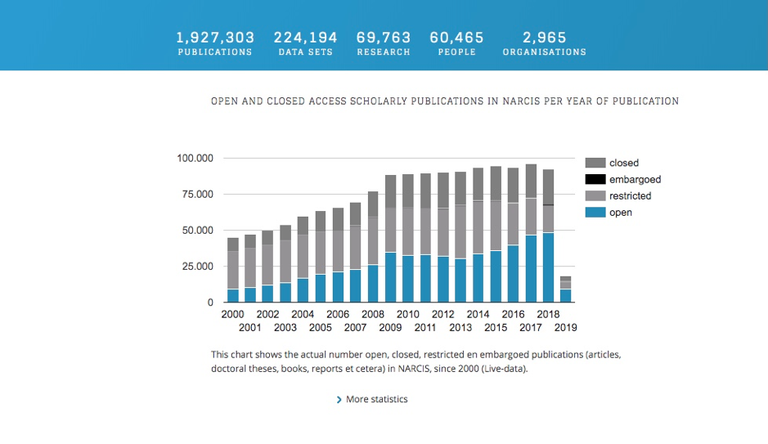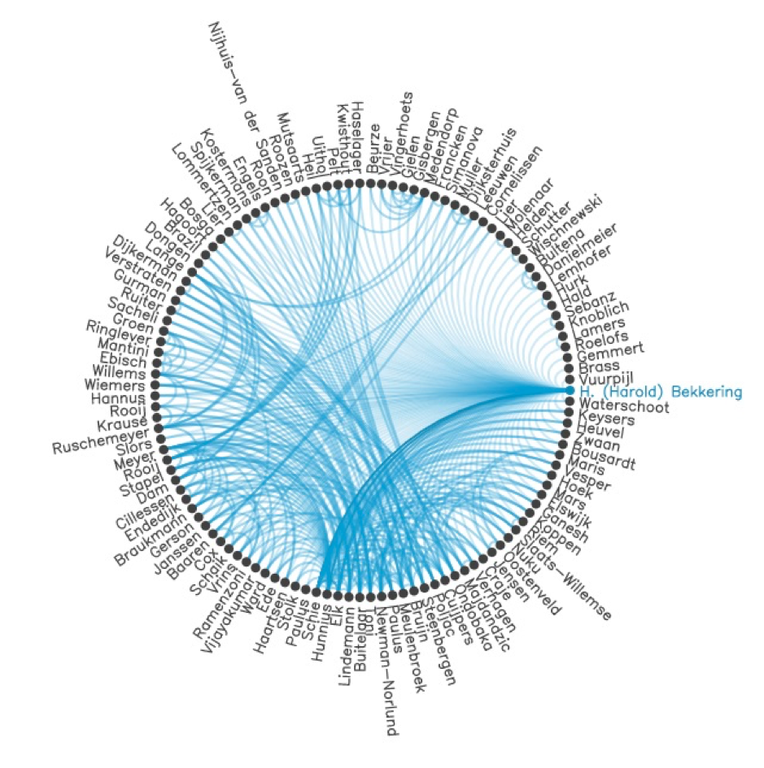Meet the FREYA partners: DANS
DANS (Data Archiving and Networked Services)
What is the mission of your organisation?
DANS is an institute of the Royal Netherlands Academy of Arts and Sciences (KNAW) and the Netherlands Organisation for Scientific Research (NWO). DANS promotes sustained access to digital research resources and encourages scientists to make their data Findable, Accessible, Interoperable and Reusable (FAIR). DANS has three core services: EASY, an online archiving system for long term storage of scientific data. DataverseNL, a community service for management of research data during the research process, and, finally, NARCIS, a national portal for information on research projects, data sets, publications and scientists in the Netherlands.

Screenshot of the national portal NARCIS for research information in the Netherlands.
Why are PIDs important (for your organisation)?
PIDs are important for DANS in multiple ways. First of all, PIDs are vital for our trusted digital repository system EASY in which we store data for the long term and make them available for reuse. PIDs also play a crucial role in our research information portal NARCIS which displays information about research (articles, datasets, research projects, researchers, academic institutions) in the Netherlands. NARCIS indexes more than 2 million research objects, often with more than one PID. The PIDs enable creating links between the research objects, for example to show the publications and research projects of a particular researcher.
What do you do in FREYA?
In FREYA, DANS is leading the work on engagement, training and communication. The team focuses on engagement and exchange with the different stakeholder communities through the organisation of events and through the PID Forum.
In addition, DANS is developing a PID Graph demonstrator in FREYA with NARCIS.
In this work, DANS use PID’s to enrich the object’s metadata by integrating information from NARCIS and other services, like ORCID.org. On basis of PIDs NARCIS can retrieve links to other publications, data, persons, funding, and organizations. By enriching the metadata NARCIS creates a PID-Graph to show research in its context. PIDs are also used to visualize a researcher’s network in a graph of collaboration. To establish the graph shown below, the metadata of the researcher’s papers are scanned for PIDs of co-authors and based on these PIDs, connections are drawn and the network is created.

Example of visualization in NARCIS displaying the relationship between different researchers based on their PIDs.
What would your perfect (PID) world look like?
It would be great if PIDs were even more widely used than they currently are. We would love to have a PID for all the objects in NARCIS so that they could be connected with each other, automatically enriching the information that we can present in the portal.
More information
Twitter: @DANSKNAW